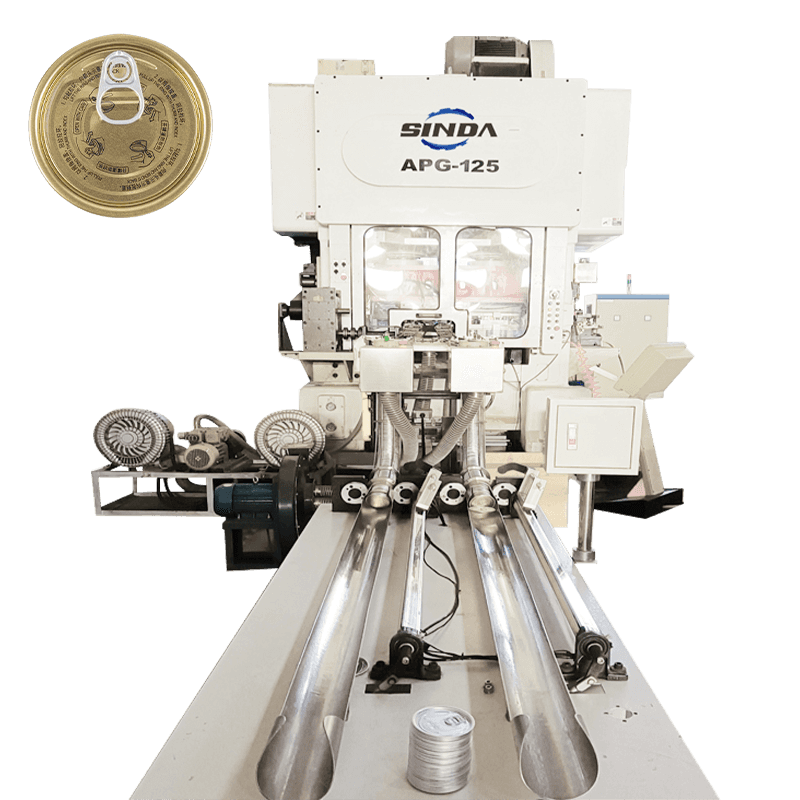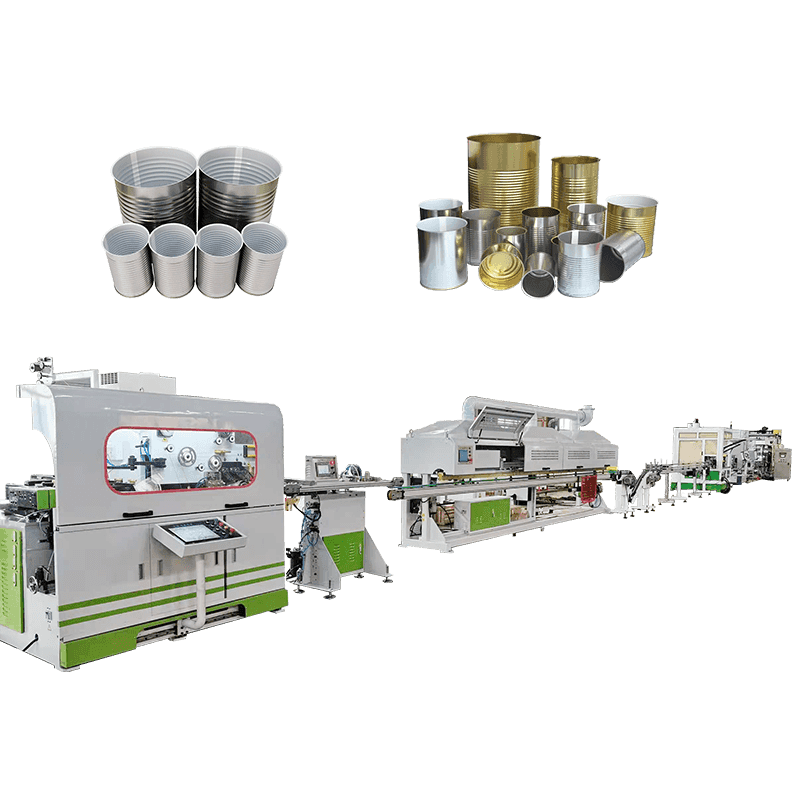Energy-Saving Principles in Aerosol Tin Can Production Lines
Modern aerosol tin can production lines are designed with energy efficiency as a key consideration, aiming to reduce overall energy consumption while maintaining high production output. These systems integrate advanced mechanical and electrical components that minimize unnecessary energy use. For instance, motors driving the conveyor belts, stamping presses, and filling machines are often equipped with variable frequency drives (VFDs) that adjust power based on load requirements. This prevents overconsumption during low-demand cycles and ensures that energy is used proportionally to production needs. In addition, automated control systems monitor the entire line to optimize operation sequences, reducing idle times and avoiding energy wastage.
Efficient Heating and Forming Processes
The production of aerosol tin cans involves several heating and forming steps, including body forming, bottom pressing, and top seaming. Energy-saving designs often incorporate localized induction heating or high-efficiency electric heaters that deliver precise heat only where necessary. By reducing the need for large-scale furnace systems or inefficient heating methods, these technologies decrease overall electricity consumption. Forming presses are also optimized for energy efficiency through hydraulic or servo-driven mechanisms, which consume less energy compared to traditional mechanical presses. This approach ensures that the metal is shaped accurately with minimal energy input while maintaining consistent production quality.
Material Handling and Conveyor Optimization
Energy consumption in a production line is significantly influenced by material handling systems. Conveyor belts, robotic arms, and automatic feeders can account for a large portion of operational energy. Modern aerosol tin can lines use energy-saving conveyor systems that operate only when cans are present and adjust speed based on throughput. These systems often employ lightweight materials and low-friction rollers to reduce mechanical resistance. Additionally, sensors integrated along the line detect the flow of cans and control motors accordingly, ensuring that energy is applied efficiently rather than continuously. Compared to older production lines, this approach reduces both electricity use and mechanical wear.
Compressed Air and Pneumatic Systems
Many aerosol tin can production lines rely on compressed air for tasks such as can ejection, lid placement, and actuating pneumatic cylinders. Traditional systems may run compressors continuously, resulting in high energy costs. Energy-saving designs incorporate variable-speed compressors and storage tanks that release air only when needed. Pressure sensors regulate the air supply, avoiding excess compression and reducing overall electricity consumption. In addition, leak detection and maintenance routines ensure that compressed air is not lost through faulty fittings, further enhancing energy efficiency. Optimizing pneumatic systems contributes substantially to lowering energy use while maintaining smooth line operation.
Water and Cooling Systems
Cooling is a critical part of the aerosol tin can manufacturing process, particularly for stamping, forming, and filling operations. Modern production lines incorporate closed-loop cooling systems with heat recovery mechanisms, which recirculate water rather than continuously drawing from external sources. This reduces water and energy use while maintaining proper operating temperatures. Energy-efficient pumps and variable-speed fans adjust flow rates based on real-time cooling needs, minimizing unnecessary consumption. In some designs, recovered heat is repurposed for preheating other process stages, further reducing energy demands. Effective cooling management helps maintain production quality without excessive energy expenditure.
Automation and Intelligent Control Systems
Automation plays a vital role in reducing energy consumption in aerosol tin can production lines. Programmable logic controllers (PLCs) and industrial computers monitor and control every stage of production, from raw material feeding to final packaging. Intelligent scheduling algorithms ensure that machines operate only when needed, minimizing idle times and standby energy usage. Sensors detect production flow, machine status, and environmental conditions, allowing for dynamic adjustment of motor speeds, heater output, and conveyor movement. By integrating data-driven control, energy is applied only where necessary, improving overall efficiency while maintaining consistent production rates. Compared to older, manually controlled systems, these automated solutions offer significant reductions in energy use.
Lighting and Facility Energy Management
In addition to the machinery itself, energy consumption in aerosol tin can production lines includes facility lighting and auxiliary systems. Energy-saving designs often use LED lighting, motion sensors, and zoned lighting to reduce electricity use. Equipment such as exhaust fans, air conditioning, and compressed air distribution is managed through centralized energy control systems that monitor consumption in real-time. By optimizing both machine operation and the surrounding environment, production lines achieve overall energy efficiency beyond the mechanical processes alone. Effective energy management ensures a sustainable operation with reduced operational costs.
Comparison of Energy Consumption Between Traditional and Energy-Saving Lines
The table below provides a comparative overview of typical energy use for different sections of a traditional aerosol tin can line versus an energy-saving design.
| Production Stage | Traditional Line Energy Use | Energy-Saving Line Energy Use | Key Efficiency Feature |
|---|---|---|---|
| Body Forming | High, continuous motor operation | Reduced via VFD motors and optimized cycle | Variable frequency drives, servo motors |
| Heating & Stamping | Continuous heating, large electric consumption | Localized, high-efficiency heaters | Induction and targeted heating |
| Conveying | Constant belt speed, no load adjustment | Speed adjusted based on throughput | Low-friction rollers, sensors |
| Compressed Air | Continuous compressor operation | Variable-speed compressors with sensors | Pressure regulation, leak detection |
| Cooling | Open-loop cooling, high water use | Closed-loop with heat recovery | Variable-speed pumps, heat reuse |
| Lighting & Facility Systems | Standard fluorescent lighting, continuous operation | LED lighting with motion sensors and zoned control | Smart energy management |
Impact on Overall Production Efficiency
Incorporating energy-saving designs in aerosol tin can production lines not only reduces electricity and water consumption but also improves overall operational efficiency. By optimizing motor usage, heating, cooling, and automation controls, energy is used in proportion to production demand. This reduces unnecessary wear on machines, extends maintenance intervals, and lowers operational costs. For commercial operators, this translates into a higher return on investment while maintaining consistent production throughput. Industrial tin can manufacturers benefit from the combination of lower utility costs and enhanced process control, creating a more sustainable and financially viable operation over the long term.
Future Trends in Energy Efficiency
Energy efficiency in aerosol tin can production lines continues to evolve, with a growing focus on integrating renewable energy sources and intelligent monitoring systems. Future designs are likely to incorporate real-time energy tracking, predictive maintenance algorithms, and hybrid heating systems that combine electricity with recovered thermal energy. As environmental regulations tighten and operational costs increase, adopting energy-saving practices is becoming an essential component of modern industrial production. Manufacturers investing in these technologies can achieve both compliance with sustainability goals and enhanced competitiveness in the global market.

 English
English عربى
عربى русский
русский




